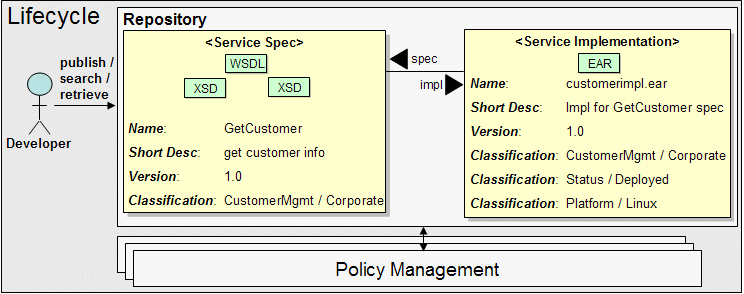This wiki is locked. Future workgroup activity and specification development must take place at our new wiki. For more information, see this blog post about the new governance model and this post about changes to the website.
Lifecycles
Development organizations and other parts of our enterprises participate in many lifecycles. More specifically, the artifacts we work with participate in those lifecycles. Those artifacts become part of assets; so - assets participate in lifecycles. We will not describe broader business processes and other lifecycles here, but we will focus on the lifecycles within which the asset management scenarios are performed. The asset management scenarios we are initially focusing on (Publish, Search, Retrieve) will execute within the context of one or more lifecycles. For a given asset type, a sample lifecycle could be:- development org submits/modifies an asset (publish asset)
- asset participates in QA review (search, retrieve, publish asset)
- asset participates in Legal review
- asset participates in UAT review
- operations team signs off the asset
- operations monitors, reports on asset
- development org declares asset to be retired
- development org retires the asset

| I | Attachment | Action | Size | Date | Who | Comment |
|---|---|---|---|---|---|---|
| |
asset_lifecycles.gif | manage | 21.5 K | 02 Jul 2009 - 14:16 | GrantLarsen |
This topic: Main > WebHome > AssetHome > AssetMgLifecycles
Topic revision: r1 - 02 Jul 2009 - 14:19:49 - GrantLarsen
Contributions are governed by our Terms of Use
Ideas, requests, problems regarding this site? Send feedback

